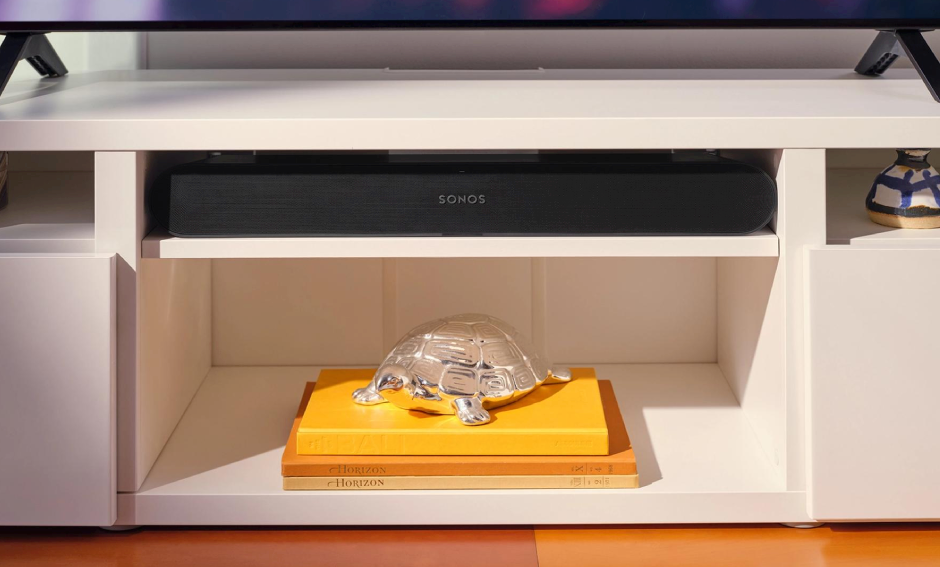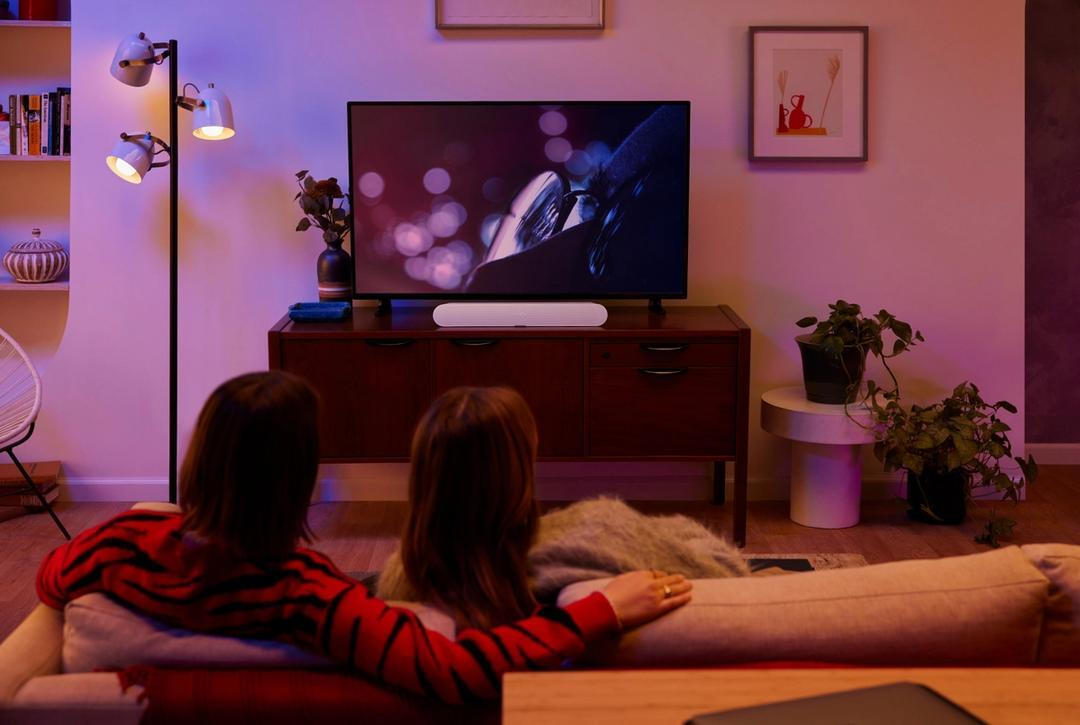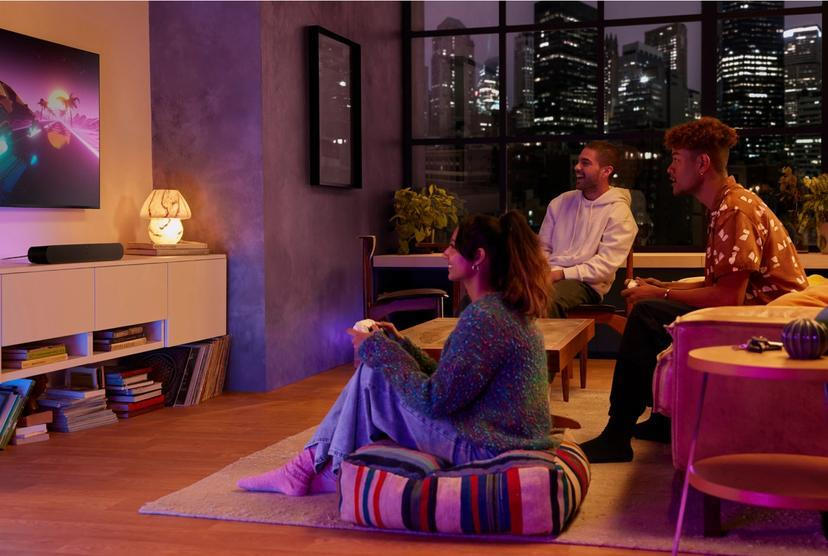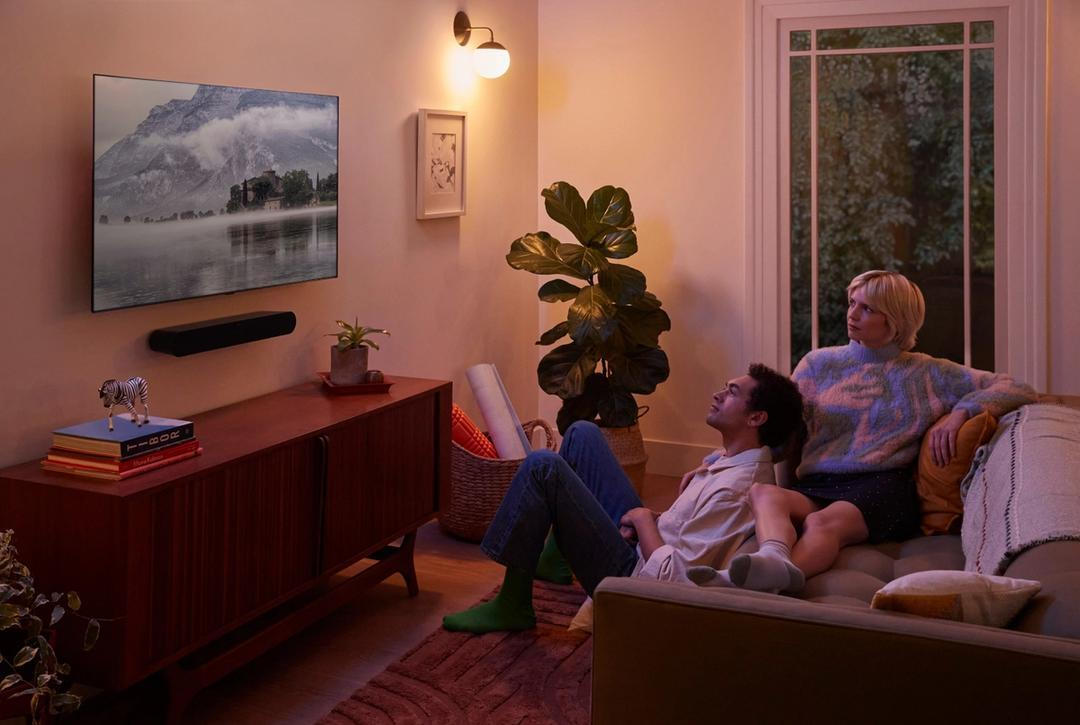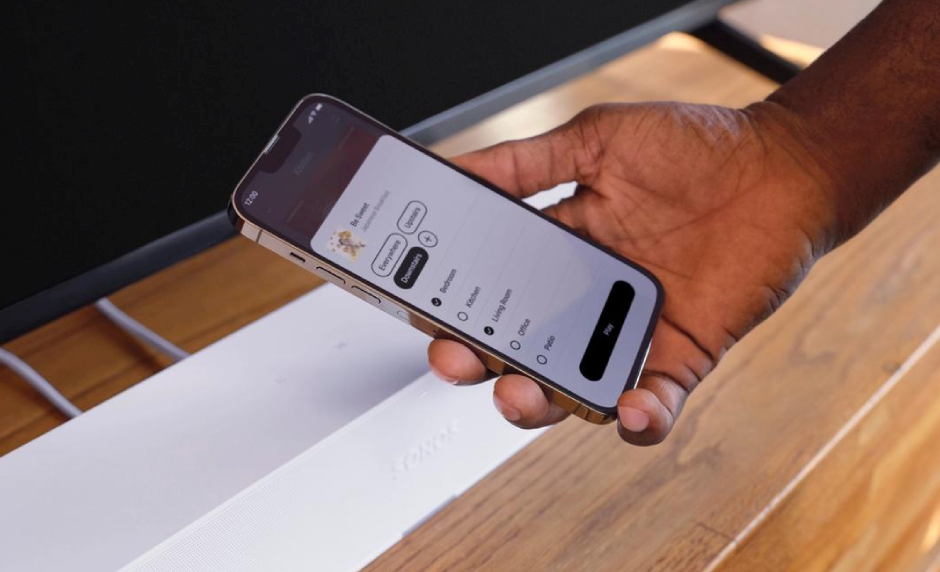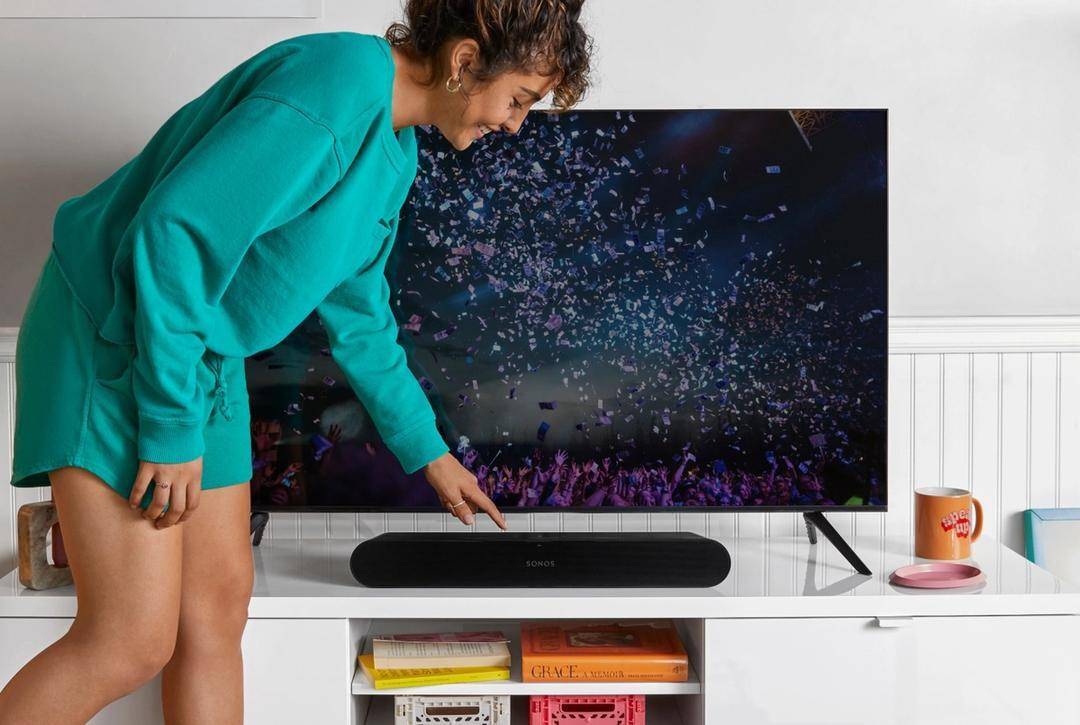Sonos recommends the Ray for TVs with diagonal sizes up to 55 inches (recommended for viewing distances between 1.4m and 2.35m). Personally, in terms of image-sound coherence, I would recommend it for TVs with diagonals of 32"-42" (which also means a closer viewing distance). With more relaxed criteria and some compromises from the ideal, I would also combine it with up to a 55" TV. Its compact size allows us to place it almost anywhere... under our TV, between its legs, on a shelf below or above the TV, on the wall with the Sonos base, etc. All of its drivers are on the front and aim straight, so there is no issue if we "squeeze" it into a closed shelf, for example. Like all Sonos products, the Ray also comes in two matte finishes, black and white. Despite its affordable price, the look and feel of the Ray are at a very good level, both visually and in terms of construction, it does not lag significantly behind its larger siblings. It is at a quite good level, above the "average" of its price category. Behind its integrated grille, we find two mid-woofers in the center, a tweeter with a split type waveguide (to achieve simultaneous direct sound dispersion and side sound dispersion through reflections in the room, creating a "surround effect" and a wider soundstage) on the left and right ends, and a passive radiator for deeper bass on each end. If this is not enough for us, like all Sonos soundbars, the Ray can be used to create a proper surround setup by adding two Sonos speakers, such as the One SL or Five, as well as one or two Sonos Sub subwoofers for an even more complete sound! All of this with wireless Wi-Fi connection, just like the soundbar (which also has an Ethernet port if our Wi-Fi signal is not good at the location). For controlling the Ray, we can use either our TV's remote control (learning function), the Sonos app on our mobile/tablet, or the touch controls on the top side of the Ray. In our first "test" for the Sonos Ray, our goal was to find the maximum level it can achieve without exceeding acceptable distortion levels. At 1m, the level reached 79dB. With slightly more relaxed criteria, but with acceptable distortion, it was "okay" at 83dB at 1m. Based on the above, we would not recommend placing the Sonos Ray at a distance greater than 1.5-1.7m from the viewing position, as the levels it achieves would be insufficient for anything beyond news broadcasts and informational programs. Next, we will conduct NearField tests to see what the individual drivers (mid-woofer, tweeter, passive radiator) do, as well as tests of the Sonos' equalization and room correction called "TruePlay". In our graph, we see the Sonos Ray's response as it comes from the factory, set up in our testing space at a distance of one meter from the listening/measurement position, shown in green. In red, blue, and yellow respectively, we see the output (NearField) of the Passive Radiators, Mid-Woofers, and Tweeters. Like all speakers, when the Sonos Ray is placed in a closed space, its response is affected by the laws of physics, cancellations and standing waves, "room modes" affect its response at the listening position, which is why we do not see the "sum" of the individual driver responses in the final response.
For the "TruePlay" room correction, we need a modern iPhone or iPad, as Sonos has created microphone calibration profiles only for Apple devices. We tried it out, and as Sonos describes at the end of the TruePlay calibration process, the differences are "small", but depending on how "problematic" the room and our placement are, they can become quite noticeable. In most of our tests, it improved the sound of the Ray, but in some parts of the response, it created a greater dip for some reason. Overall, the benefits outweighed the negatives, so if you don't have an iPhone or iPad, it's worth borrowing one from a friend to go through the brief (about 10 minutes in total) process.
Conclusion 1: If you are a fan of action movies and want to "experience" the explosions, etc., you will need to invest a significant amount to get the Sonos Sub(woofer) to bring the low frequencies of the bass to life, as Ray alone cannot deliver deep bass at a sufficient level (it comes alive from 51Hz and onwards). For less demanding users, compared to TV speakers, there is naturally more bass and a "sense" of it, but it won't shake your couch. If you find the Sonos Sub expensive, at least compared to the cost of acquiring the Ray, it is rumored that Sonos will soon release a smaller subwoofer (Sonos Sub Mini?) at a more affordable price.
Conclusion 2: Despite its affordable price and tiny size, the Ray maintains the Sonos sound character, with balanced sound, a declining response curve, detailed and clear sound without shrillness, nor does it emphasize the high frequencies to "steal" the spotlight in presentation spaces.
Conclusion 3: Ray also has its "limits". It is "ideal" for a bedroom. In a small living room, it will breathe new "life" into your TV. However, it will not cover your movies at high levels if you have a large open space or sit at a considerable distance from the TV and soundbar (anything beyond 2m would be considered "unacceptable" and we would recommend going for at least the Sonos Beam Gen. 2 or a soundbar of similar level).
If your viewing distance is below 2m (ideally between 1m and 1.5m), and you don't have specific bass requirements, you will love the Ray. If you want a small, elegant, and "portable" soundbar with good sound quality at reasonable levels, the Ray will still leave you satisfied. If you are looking for the feeling of a discrete home cinema system, neither Ray nor any soundbar in general will satisfy you. However, if your space is small and you plan to add at least one Sonos Subwoofer (even the rumored smaller model), or ideally 2 surround speakers, with the money you will spend, you will get quality and fidelity of sound that is hard to find in speakers of the same value.










































